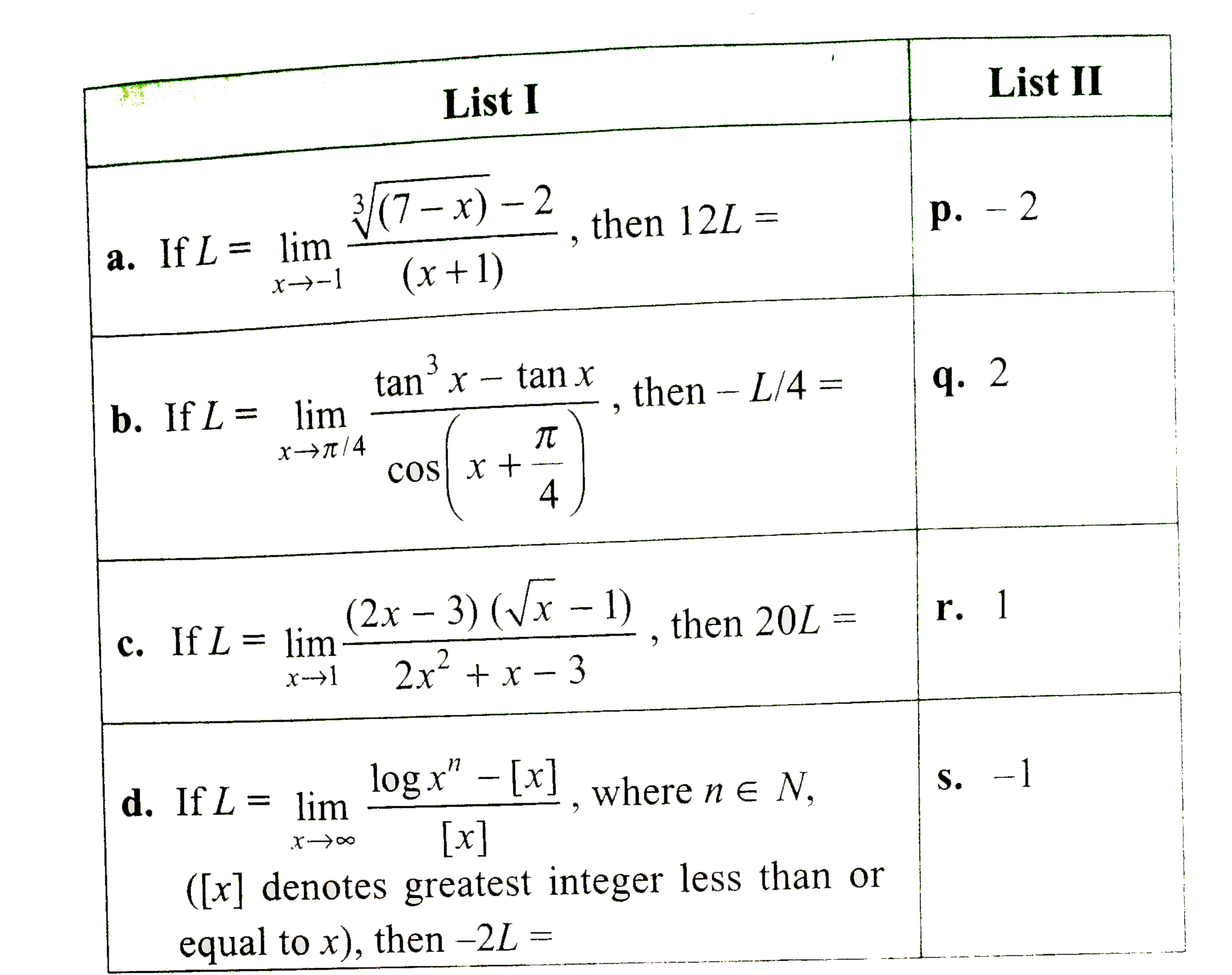is equal to (a) (b) (c) (d) Solution in Bengali
The correct Answer is:B
Topper's Solved these Questions
- LIMITSBook:CENGAGE PUBLICATIONChapter:LIMITSExercise:Linked Comprehension Type
Explore 20 Videos
- LIMITSBook:CENGAGE PUBLICATIONChapter:LIMITSExercise:Matrix Match Type
Explore 5 Videos
- LIMITSBook:CENGAGE PUBLICATIONChapter:LIMITSExercise:EXERCISE 2.8
Explore 8 Videos
- JEE 2019Book:CENGAGE PUBLICATIONChapter:JEE 2019Exercise:Chapter 10
Explore 8 Videos
- LINEAR COMBINATION OF VECTORS, DEPENDENT AND INDEPENDENT VECTORSBook:CENGAGE PUBLICATIONChapter:LINEAR COMBINATION OF VECTORS, DEPENDENT AND INDEPENDENT VECTORSExercise:DPP 1.2
Explore 10 Videos
Similar Questions
Letf(x)=sin−1(1−{x})×cos−1(1−{x})√2{x}×(1−{x}), where {x} denotes the fractional part of x.
L=limx→0−f(x) is equal to
View SolutionMatch the following lists:

View SolutionEvaluate limx→1cosπ2x1−√x
View SolutionIf y = y(x) is the solution of the differential equation, xdydx+2y=x2 satisfying y(1) = 1, then y(12) is equal to
View SolutionThe number of integral values of p for which (p+1)ˆi−3ˆj+pˆk,pˆi+(p+1)ˆj−3ˆk and −3ˆi+pˆj+(p+1)ˆk are linearly dependent vectors is q
View Solution(lim)x→0(sin(πcos2x)x2) is equal to (a) −π (b) π (c) π2 (d) 1
View Solution(lim)x→0sin(x2)1n(cos(2x2−x))isequa<o 2 (b) −2 (c) 1 (d) −1
View Solution(lim)x→∞sin4x−sin2x+1cos4x−cos2x+1 is equal to (a) 0 (b) 1 (c) 13 (d) 12
View SolutionLet y=1n(1+cosx)2 . Then the value of d2ydx2+2ey2 equal (a)0 (b) 21+cosx (c)41+cosx (d) −4(1+cosx)2
View Solution(lim)x→0(cosx)1/3−(cosx)1/2sin2x equals a. 1/12 b. 1/6 c. 1/3 d.1/2
View SolutionThe value of (lim)x→0√2−√1+cosxsin2x is 12√2 b. 18√2 c. 14√2 d. −14√2
View Solutionthe value of cos(cos−1x+sin−1(x−2)) is equal to (A) 0 (B) 1 (C) -1 (D) √1−x2.√x2−4x+3+x(x−2)
View Solutionddx(sin−1x+cos−1x) is equal to : (A) 1√1−x2, (B) 2√1−x2, (C) 0 (D) √1−x2
View Solution(lim)x→0(sin(πcos2x)x2) is equal to (a) −π (b) π (c) π2 (d) 1
View Solution(lim)x→0sin(x2)1n(cos(2x2−x)) is equal to (a) 2(b) −2 (c) 1 (d) −1
View Solution(lim)x→0sin2xx is equal to a. 1 b . 1/2 c. 2 d. 0
View Solution